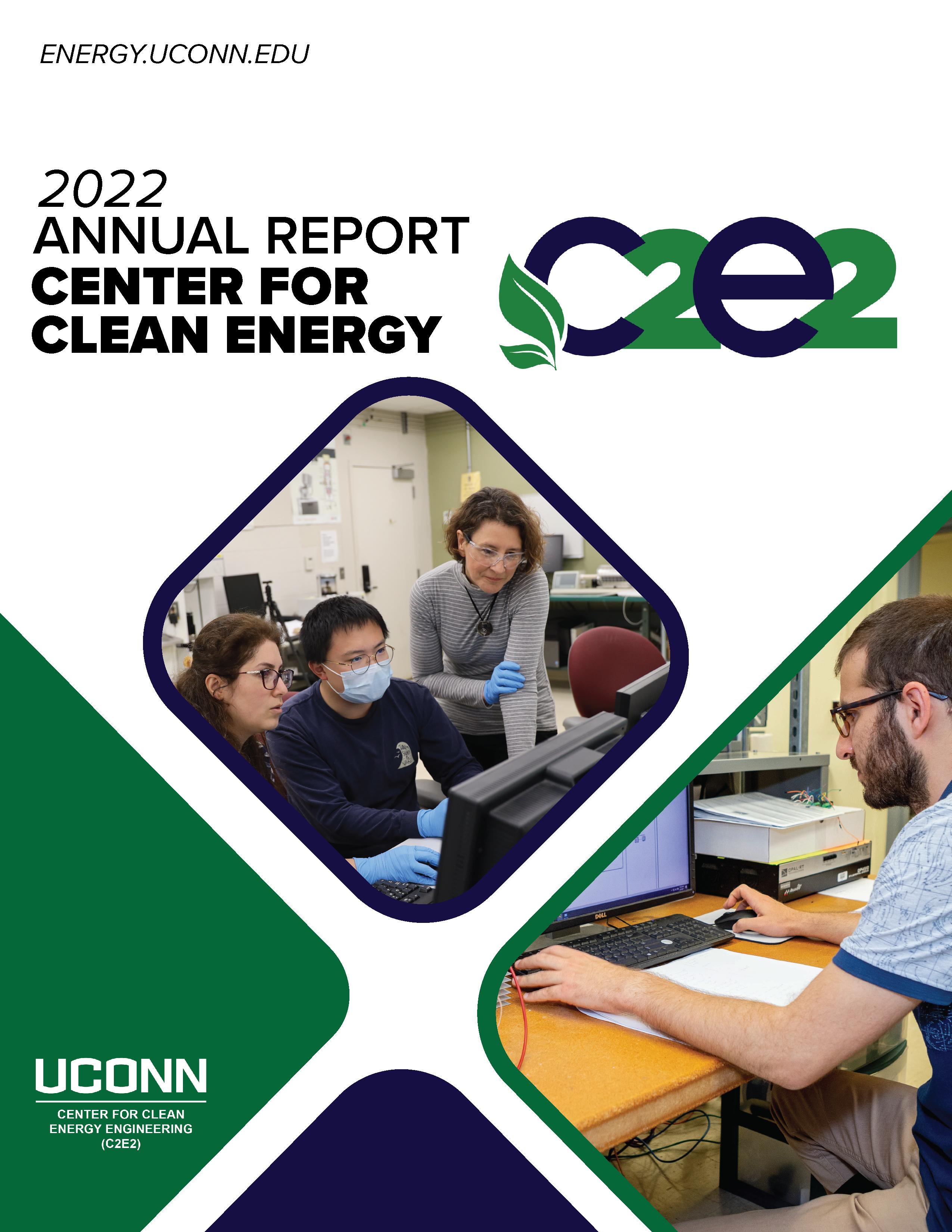
DIRECTOR'S MESSAGE
"The Center for Clean Energy Engineering (C2E2) has experienced an exciting year in 2022. With the focus on clean and renewable energy technologies, C2E2 is focused on transformative solutions and providing a high quality education and research opportunities for our students. Our talented students graduate from the university with the tools to meet our world's challenges in the clean energy environment through accelerated and enhanced learning opportunities addressing real work problems.
C2E2 is proud a leader in clean energy research offering some of the most impactful research discoveries in this field. We are proud to be a learning center where cross-disciplinary collaboration with faculty, students, and our industrial partners work hand-in-hand on cutting-edge research."
 Ugur Pasaogullari
Ugur Pasaogullari
Ugur Pasaogullari
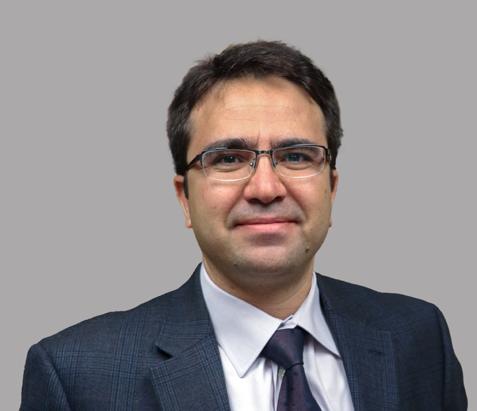 Director C2E2 Professor of Mechanical Engineering
Director C2E2 Professor of Mechanical Engineering
OUR MISSION
C2E2 is in a leadership position to address and meet emerging energy, water, and climate challenges at the national and global levels. This involves transforming science to systems; bridging the gap from fossil fuels to 100% renewable energy and enabling the development of economical solutions for critical technical issues.
The priority of our center's research activities are related to clean and renewable energy technolgies within UConn's School of Engineering. This past year C2E2 has added new faculty to the center. Most recently we welcomed Burcu Beykal (CBE), Chao Hu (ME), Naba Karan (C2E2), SeungYeon (Sally) Kang (ME), Georges Pavlidis (ME), and Hongyi Hu (ME), to our list of resident faculty. This is an exciting time for C2E2 to collaborate with partners to tackle the challenges of today's energy needs.
The Center's main facilities are located on the Depot campus just 2 miles from Storrs main campus. The center's facilities extend to the new Engineering Science Building (ESB) on the main campus. Our center has demonstrated sustained growth of externally funded research in areas related to energy by providing a collaborative research environment and maintaining shared facilities that support high quality research.

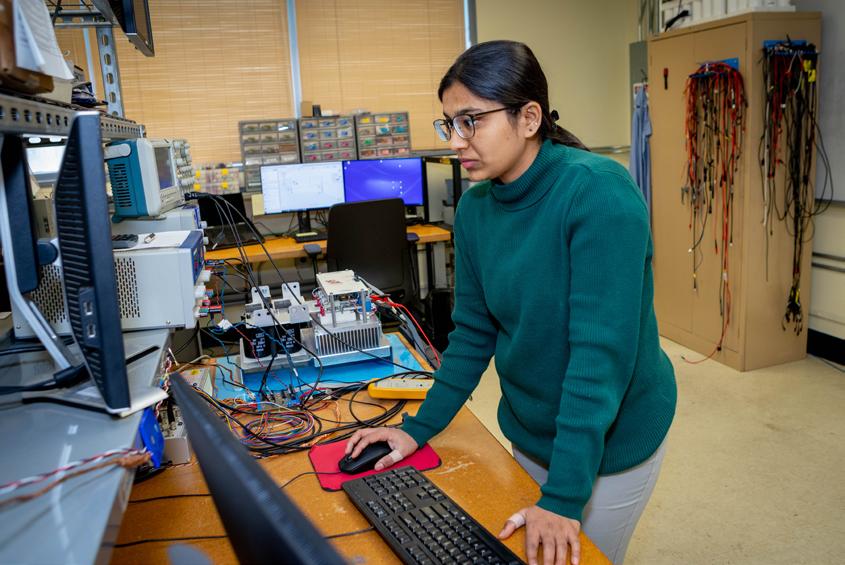
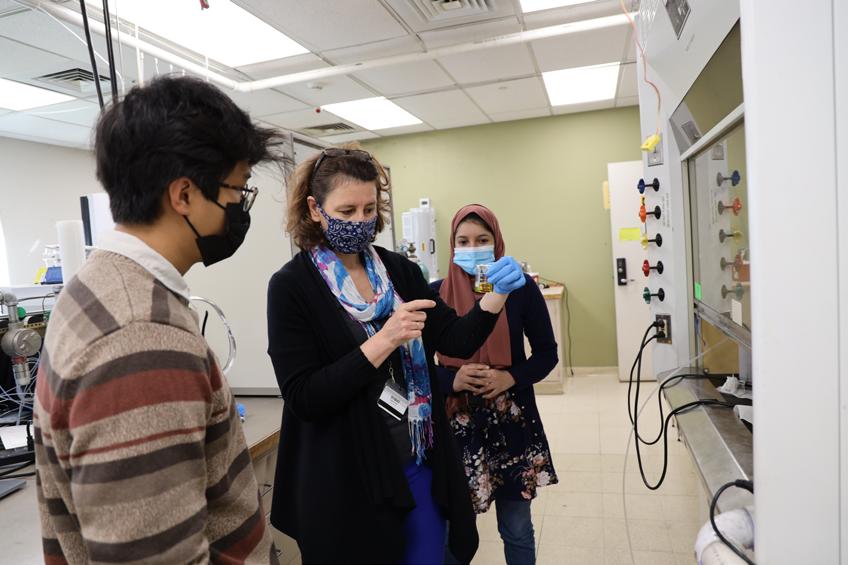
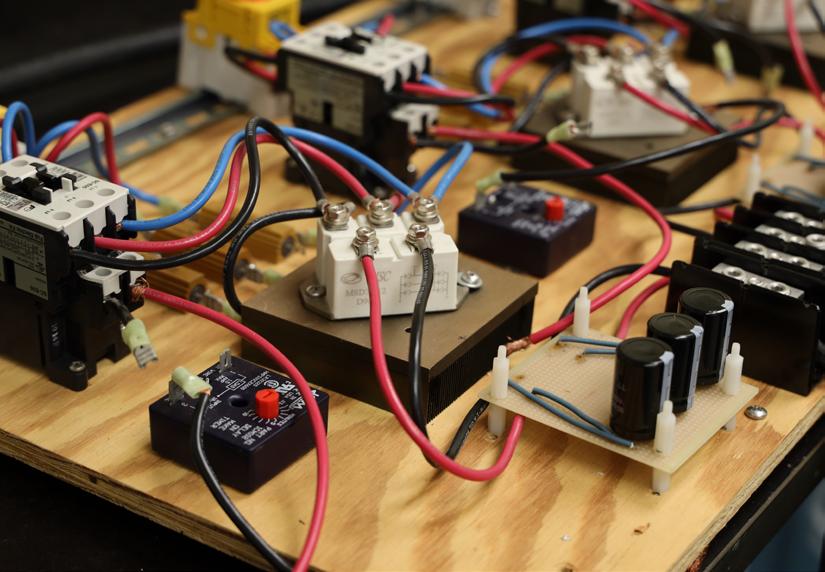
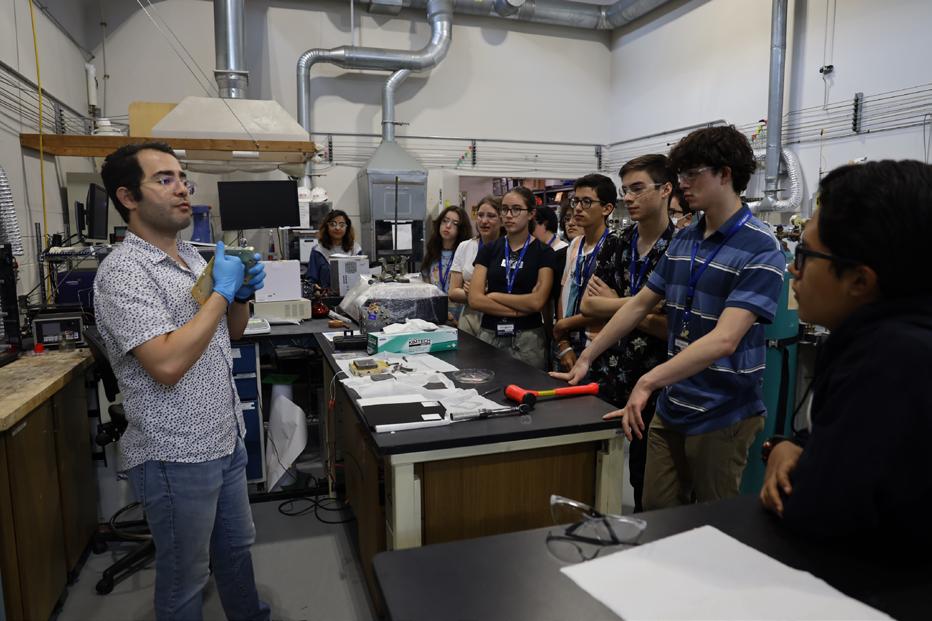
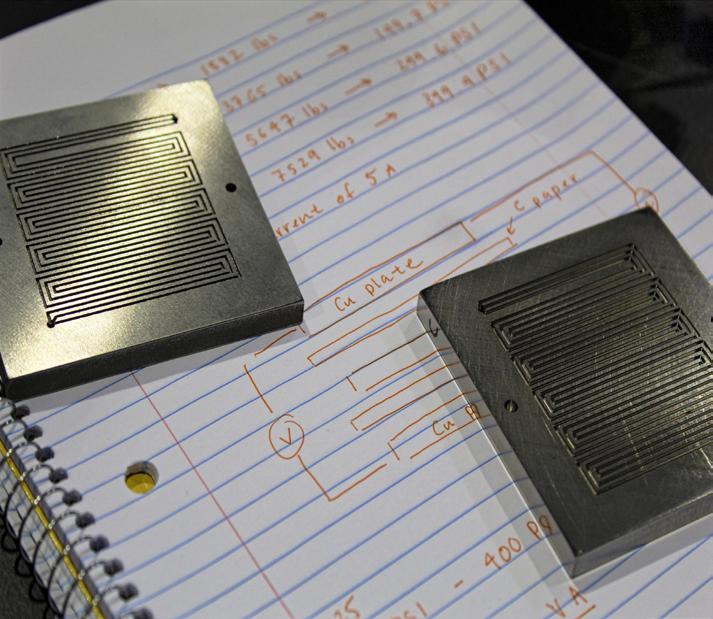
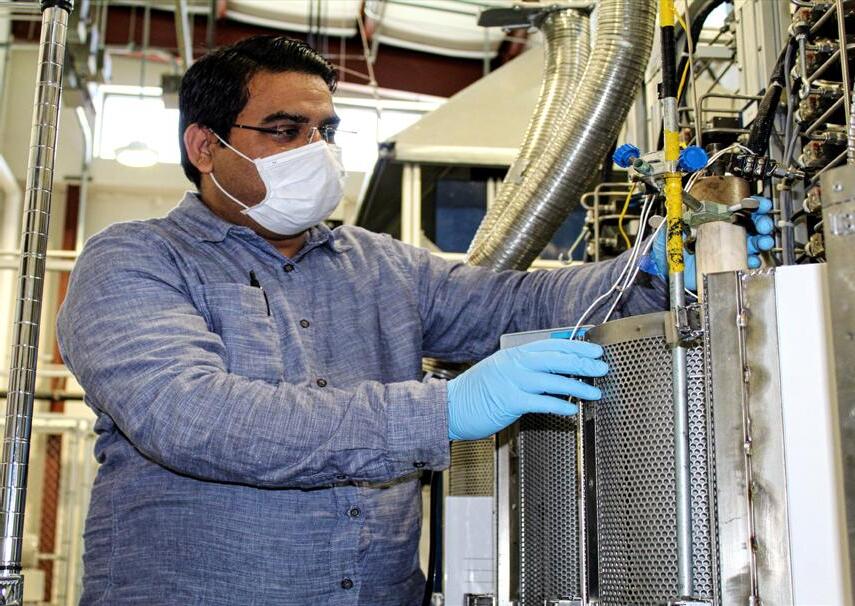
INTRODUCTION ORGANIZATION FACILITIES CENTER NEWS PROPOSALS, AWARDS, EXPENDITURES TABLE OF CONTENTS 2022 ANNUAL REPORT 5 8 10 14 30 UCONN CENTER FOR CLEAN ENERGY ENGINEERING
ABOUT US
The Center for Clean Energy Engineering (C2E2) serves as a bridge for the development to deployment activities involving fundamental and applied research in clean and efficient energy systems (from energy conversion and distributed generation technologies to utilization of fossil and non-fossil fuels to power distribution and management). Key to these activities is the utilization of foundational knowledge in the field of materials science, systems engineering, computational analysis, large scale demonstration and testing as well as training of 21st century scientists and engineers.
C2E2 is in a leadership position to address and meet the emerging "Energy, Water and Climate" challenges at the national and global levels. C2E2 is a multi-disciplinary energy research center whose main focus is to facilitate education, training, outreach, and research at UConn and in partnership with the State of Connecticut and industrial partners. The center provides an educational platform for scientific and engineering knowledge base leading to transformational breakthroughs. This is accomplished in the development and validation of advanced energy system concepts and through cost effective engineering and demonstration.
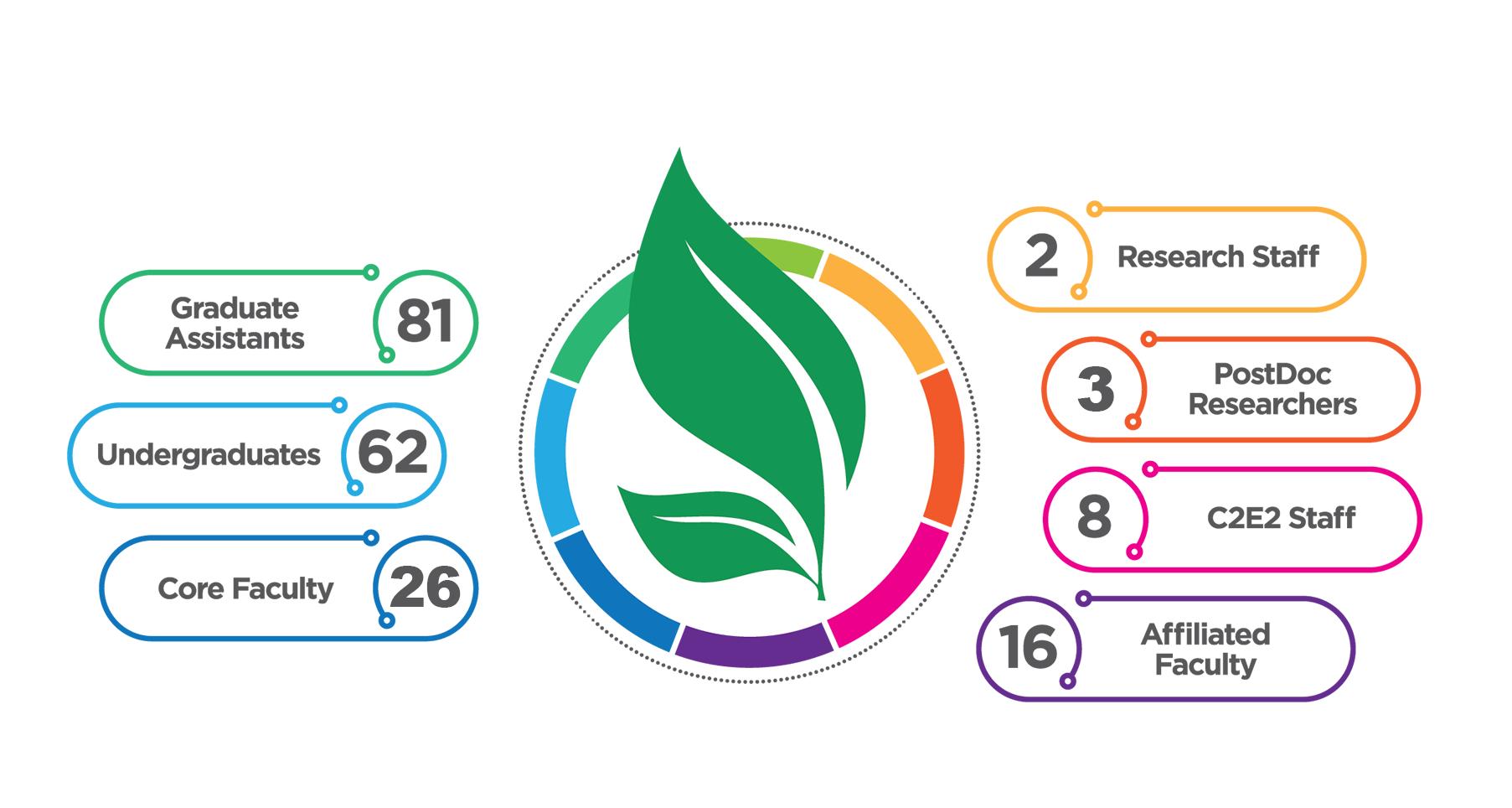
5 energy.uconn.edu |
OUR RESEARCH AREAS: FOCUSING ON ENERGY
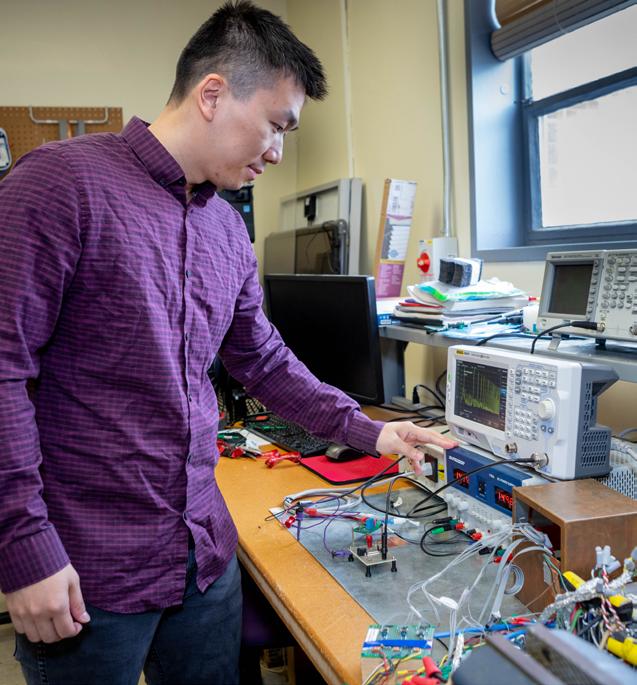

ENERGY MATERIALS, PROCESSES & SYSTEMS
Improving the efficiency and durability, while reducing the cost of high and low temperature fuel cells and other power conversion.
COMBUSTION SCIENCE AND TECHNOLOGY
Creating novel techniques for chemical conversion of fuels, improving the quality of emissions and increasing the efficiency of existing methods of conversion.
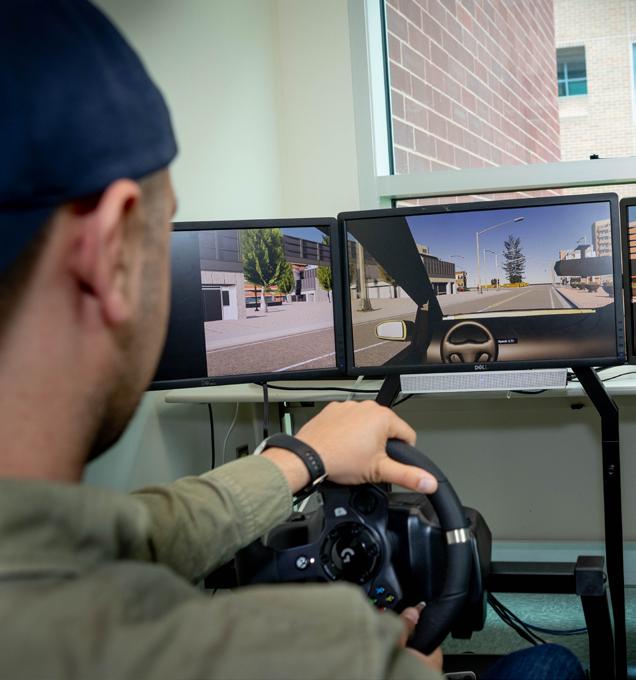
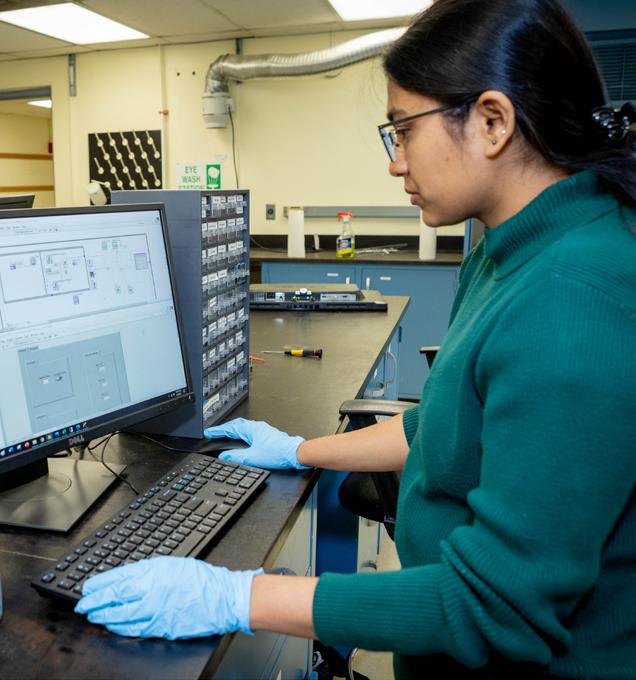
ENERGY STORAGE AND POWER MANAGEMENT
The storage and conversion of energy obtained from fossil fuels, biofuels, fuel cells, solar, wind, and hydroelectric sources for distributed generation applications through the development of enabling technologies for the “smart grid.”
FUELS AND FUEL PROCESSING
Improving hydrogen production, catalysis, and heat integration for fuel reformation; improving waste heat recovery and reducing CO2 emissions in coal refineries; thermo-chemical and hybrid cycles; gasification and extracting energy from sources of organic materials such as coal, petroleum, biofuel.
6
• SPECIALIZED TRAINING FOR THE NEXT GENERATION OF ADVANCED MANUFACTURING LEADERS IN ENERGY SYSTEMS
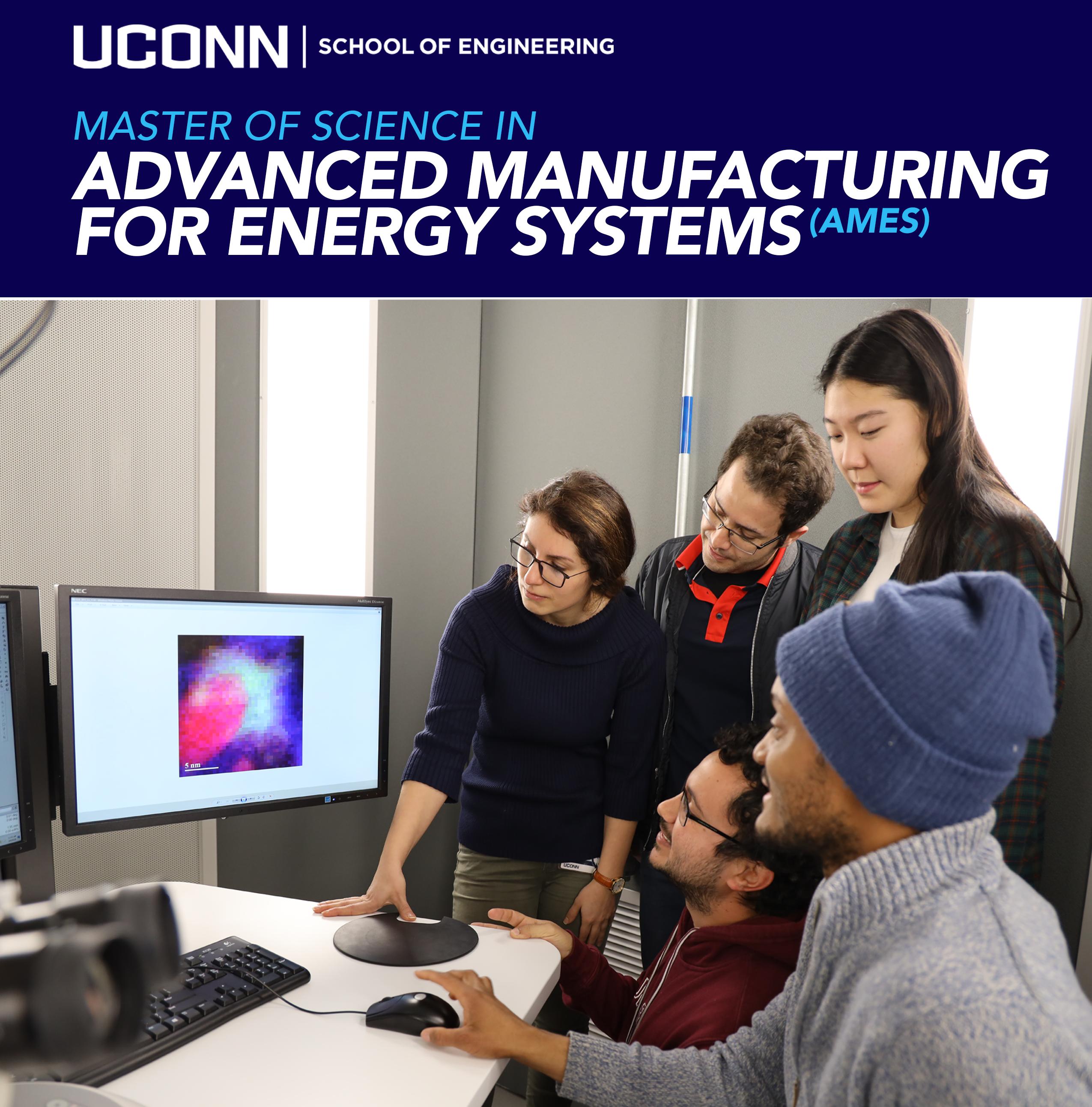
• INTERDISCIPLINARY LEARNING EXPERIENCE
• CONCENTRATIONS IN ADVANCED MATERIALS PROCESSING; AND SENSING & DIAGNOSTICS
• INDUSTRIALLY RELEVANT TRAINING, INDUSTRIAL CO-ADVISOR FOR THE MS THESIS, SUMMER INTERNSHIP AT AN INDUSTRIAL PARTNER FACILITY
FOR MORE INFORMATION, ENERGY.UCONN.EDU/AMES
7 energy.uconn.edu |
RESIDENT FACULTY PROFILES
ALEX AGRIOS
Associate Professor
Civil & Environmental Engineering
SRIVATSA BETTAHLLI
Assistant Research Professor
Connecticut Center for Applied Separations Technologies (CCAST)
NECMI BIYILKI
Assistant Professor
Electrical & Computer Engineering
ALI BAZZI
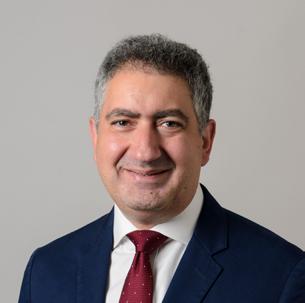
UTC Associate Professor of Engineering Innovation
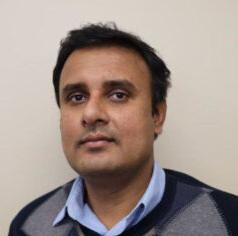

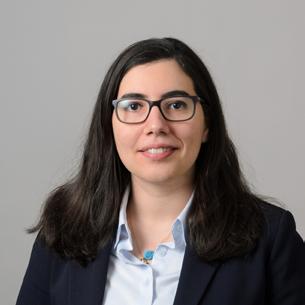
Electrical & Computer Engineering
BURCU BEYKAL
Assistant Professor
Chemical & Biomolecular Engineering
STOYAN BLIZNAKOV
Associate Director Research
Infrastructure & Associate Research Professor
Center for Clean Energy Engineering
FRANCESCO CARBONE Assistant Professor
Mechanical Engineering
JASNA JANKOVIC
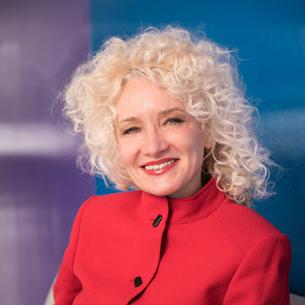

Assistant Professor
Materials Science & Engineering
SEUNGYEON (SALLY) KANG
Assistant Professor
Mechanical Engineering
CHAO HU
Associate Professor
Mechanical Engineering
NABA KARAN
Assistant Research Professor
Center for Clean Energy Engineering
TIANFENG LU Professor
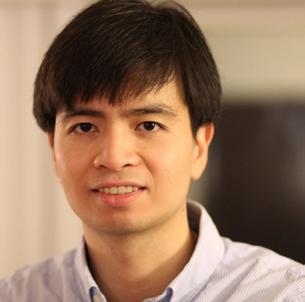
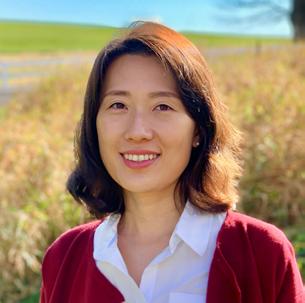


Electrical & Computer Engineering
RADENKA MARIC President of UConn
Board of Trustees Distinguished Professor
Chemical, Biomolecular & Materials Science Engineering
JEFFREY MCCUTCHEON Professor
Connecticut Center for Applied Separations Technologies (CCAST)
Chemical & Biomolecular Engineering
GEORGE MATHEOU Assistant Professor
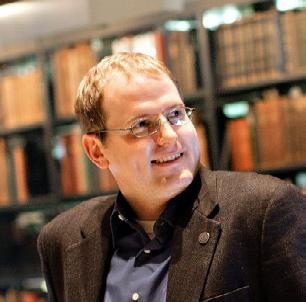

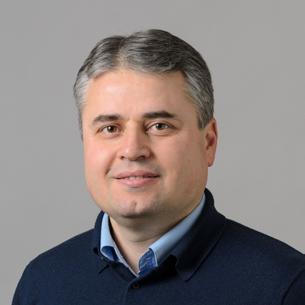
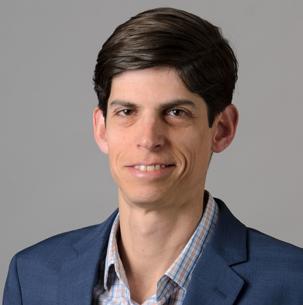
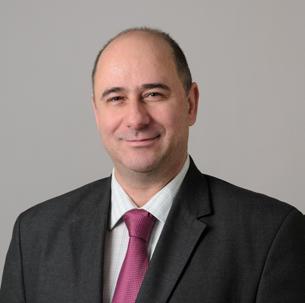

Mechanical Engineering
THANH NGUYEN
Associate Professor
Mechanical Engineering
8
SUNG-YEUL PARK
Associate Professor
Electrical & Computer Engineering
GEORGE PAVLIDIS
Assistant Professor
Mechanical Engineering
LESLIE SHOR
Associate Professor, Associate Dean of Research & Graduate Education
Chemical & Biomolecular Engineering
CHIH-JEN SUNG
CT Clean Energy Fund Professor in Sustainable Energy Mechanical Engineering
KRISTINA WAGSTROM
Associate Professor
Chemical & Biomolecular Engineering
HONGYI XU
Assistant Professor
Mechanical Engineering
RESEARCH SPECIALISTS
LEONARD BONVILLE Research Specialist
Center for Clean Energy Engineering
AFFILIATED FACULTY
UGUR PASAOGULLARI
Director & Professor
Center for Clean Energy Engineering
Mechanical Engineering
ALEXEI POLUDNENKO
Associate Professor
Mechanical Engineering
PRABHAKAR SINGH
UTC Endowed Chair Professor


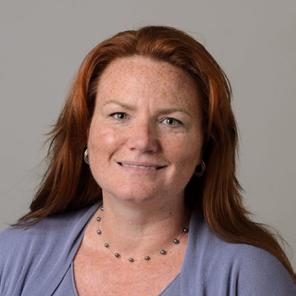
Materials Science & Engineering
IOULIA VALLA
Associate Director of Strategic Initiatives & Associate Professor
Chemical & Biomolecular Engineering
Mechanical Engineering
BRIAN WILLIS Professor
Chemical & Biomolecular Engineering
XINYU ZHAO
Associate Professor
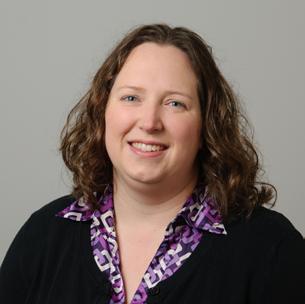
Mechanical Engineering
EDWARD WAZER Researcher Assistant & Laboratory Director
CT Center for Applied Separation Technologies (CCAST)
Emmanouil Anagnostou | Director of Eversource Energy Center Eversource Energy | Civil & Environmental Engineering
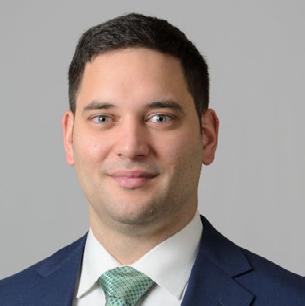
Mehdi Anwar | Professor | Electrical & Computer Engineering
Hadi Bozorgmanesh| Professor of Practice| School of Engineering

Yupeng Chen | Associate Professor | Biomedical Engineering
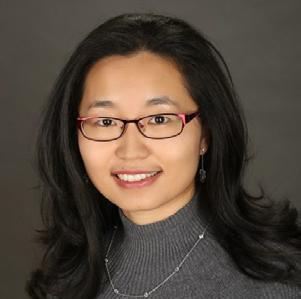
Wilson Chiu | Professor | Mechanical Engineering

Avinash Dongare | Associate Professor| Materials Science & Engineering
Jeongho Kim | Professor| Civil & Environmental Engineering
Yu Lei | Centennial Professor| Chemical & Biomolecular Engineering
Anson Ma | Associate Professor| Chemical & Biomolecular Engineering
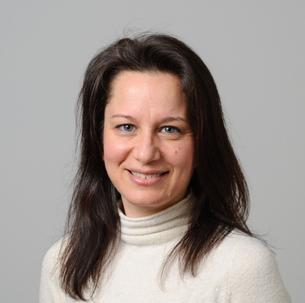

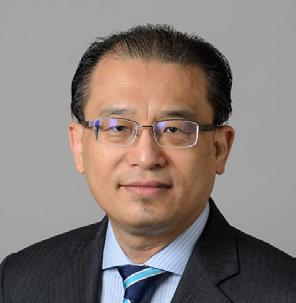
Ranjan Srivastava | Department Head & Professor| Chemical & Biomolecular Engineering
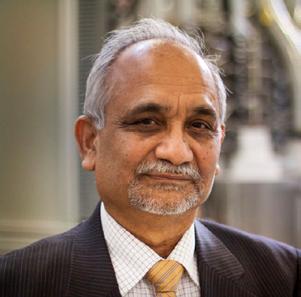
Steven Suib | Director of IMS & Board of Trustees Distinguished Professor of Chemistry | Institute of Materials Science

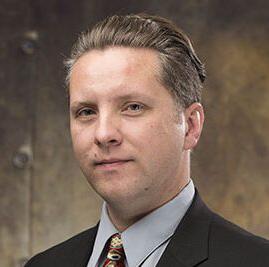
9 energy.uconn.edu |
There are three locations which make up the research facilities for C2E2. Longley building and the C2E2 building on the Depot campus at Storrs, the 5th floor of the new Engineering Science Building (NESB) and the CCAST membrane center located in the Innovation Partnership building (IPB) . C2E2's space on UConn's Depot campus has 16,000 sq.ft. of facility space, where researchers and students share facility resources and equipment. There is additional shared space and resources at the NESB where C2E2 has 18,000 sq. ft. of research space and along with another 1400 sq.ft of space at the IPB which houses the CCAST center.
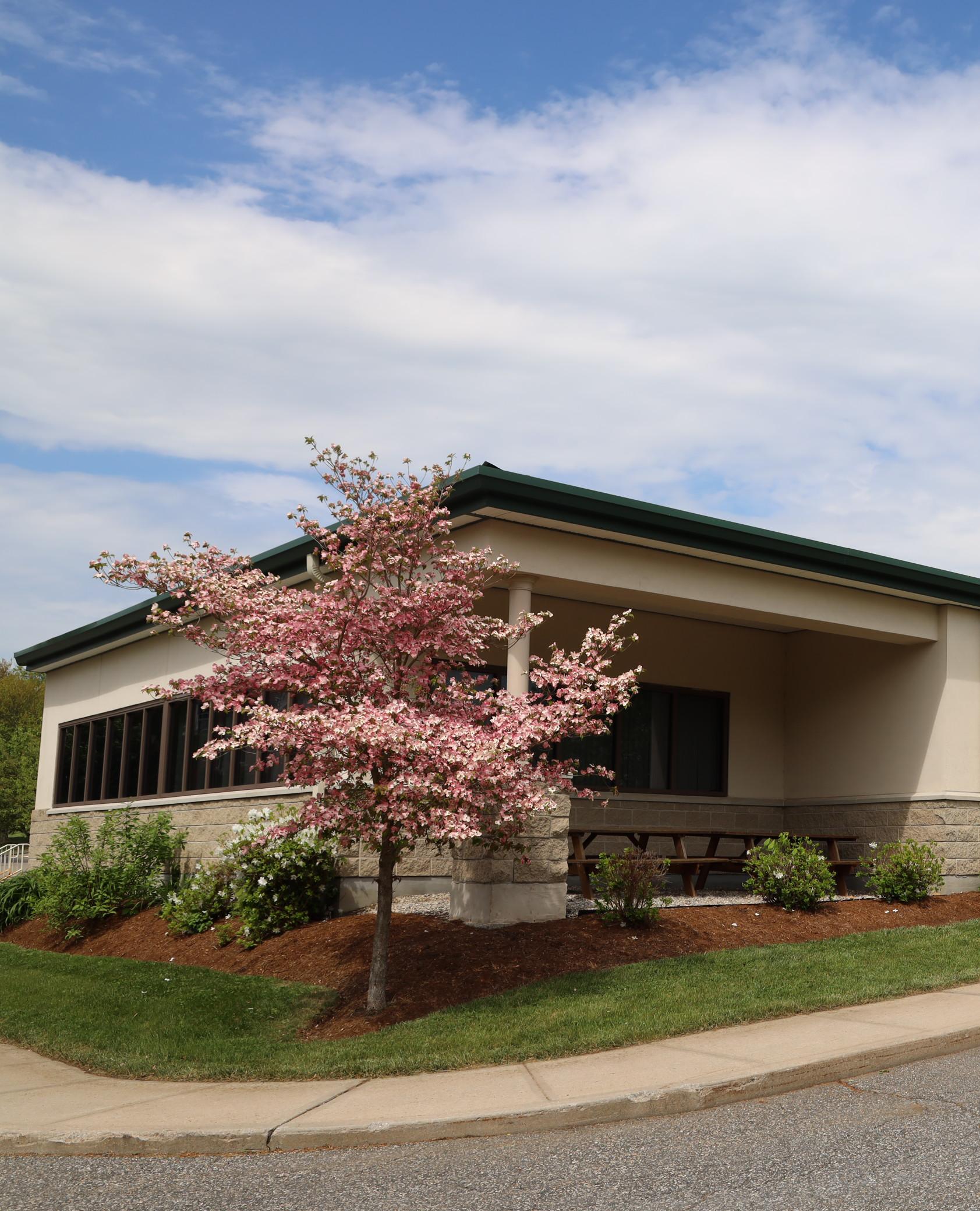
10

11 energy.uconn.edu |
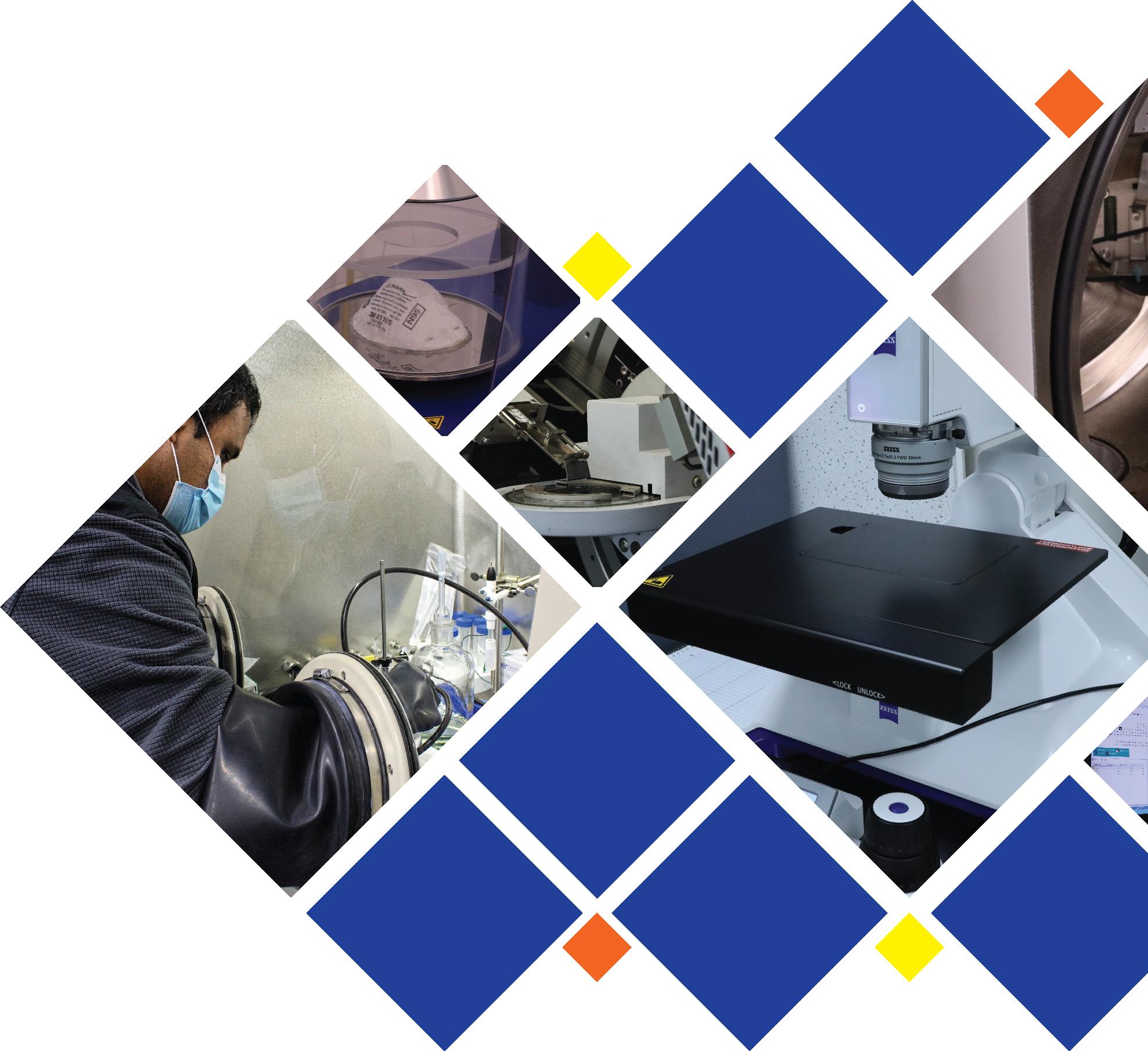
12
THE EQUIPMENT THAT MAKES RESEARCH POSSIBLE
The Center for Clean Energy has a multitude of equipment that aids researchers, professors and students to conduct their research. Some of our most notable equipment is stateof-the-art i.e., Quanta 250 Scanning Electron Microscope and the Bruker D8 High Temperature X-ray Diffractometer among others. Please check out the list of equipment on our website.
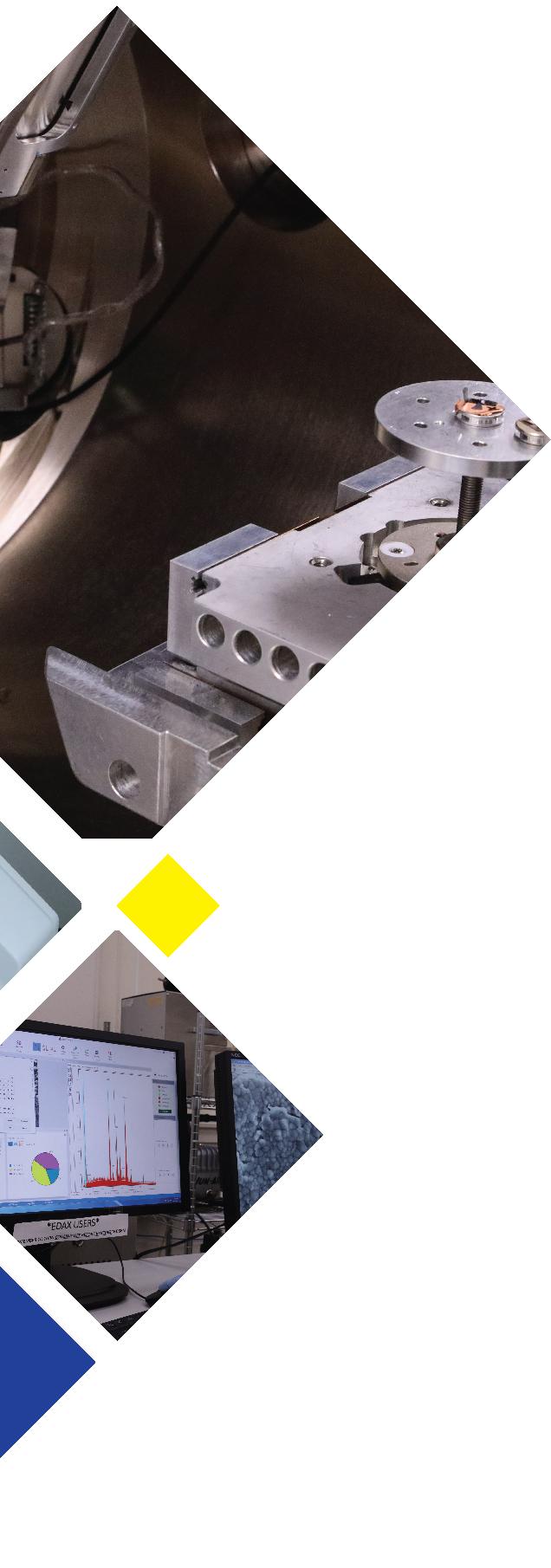
13 energy.uconn.edu |
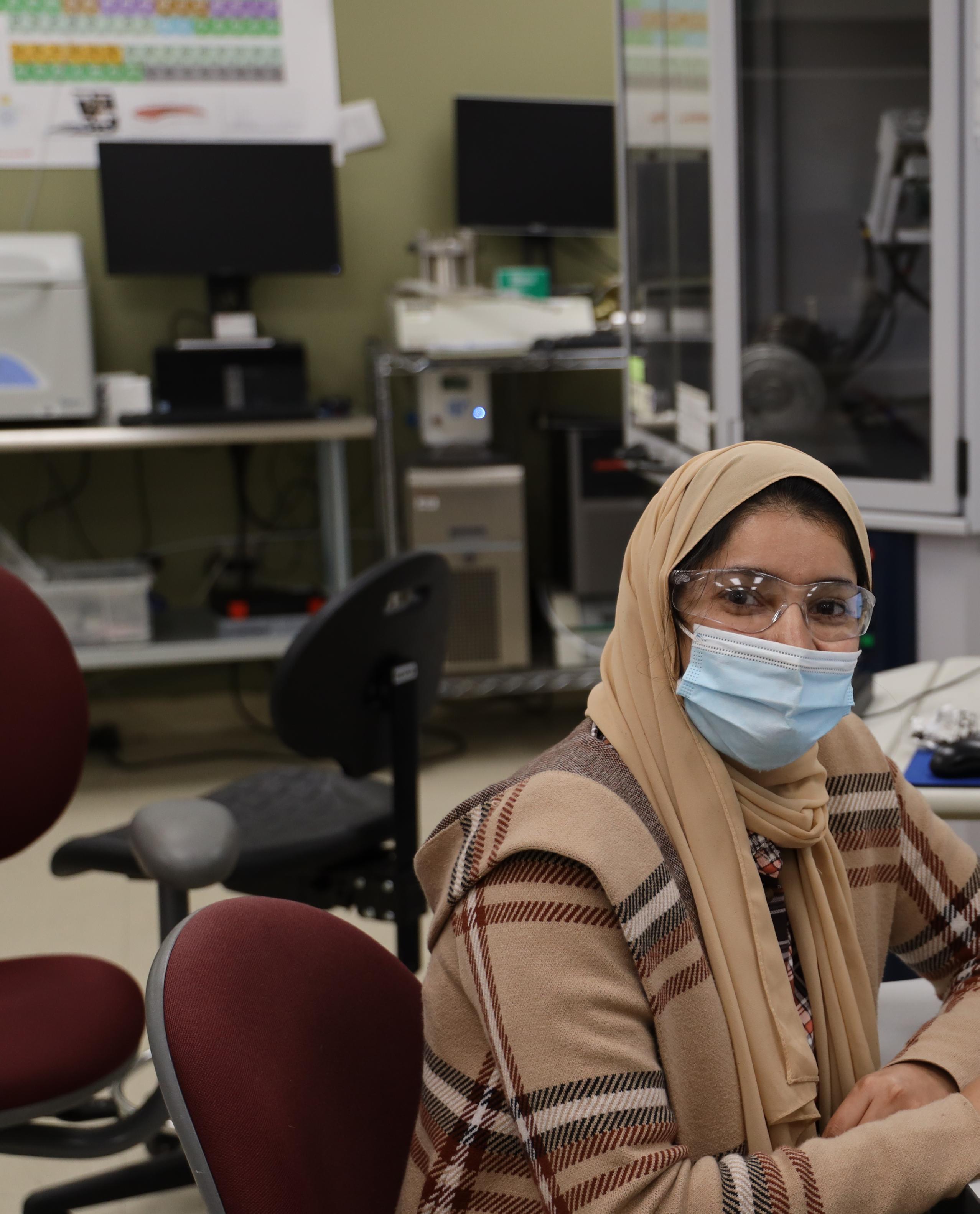
14
"Fuel cells have always amazed me. I believe they are the next big thing."
True Potential Found at the World Fuel Cell Conference: Mariah
Batool Achieves 2nd Place
Sparked by her interest from working for an oil and gas refinery in Pakistan, her home country, Mariah Batool says “fuel cells have always amazed me. I believe they are the next big thing”. Mariah came to UConn on a Fulbright scholarship to focus on her research on advanced image processing methods for fuel cell applications which is a specialty of Dr. Jasna Jankovic, Assistant Professor in Materials Science & Engineering Dept. who conducts research at UConn’s Center for Clean Energy Engineering. “I was presented with an opportunity to give a 3 Minute Thesis (3MT) at the World Fuel Cell Conference (WFCC) in Canada where I shared and explained my research in less than three minutes. The WFCC is organized by the International Association of Hydrogen Energy (IAHE) as well as the Waterloo Institute for Nanotechnology (WIN) in Canada. The conference features academia and industry and allows for people to share or gain knowledge of the fuel cell industry. “Originally, I wasn’t planning on participating in the conference since I had just had a baby, but when it was moved to a virtual format, I reconsidered.” Mariah explained that she wasn’t expecting second place at all. She tried her best to simplify her research by not using complex words but explained that it’s harder to express research in a simpler way for people who don’t know about the research, as it may be harder for them to find a purpose in it. Since becoming a mother, Mariah quickly had to figure out how to return to her research. This opportunity led her to believe that nothing has changed and that she could, “go on to do wonders. Be very concise and clear." We congratulate Mariah on her prestigious award, on becoming a mother, and her journey onwards to do “wonders”.
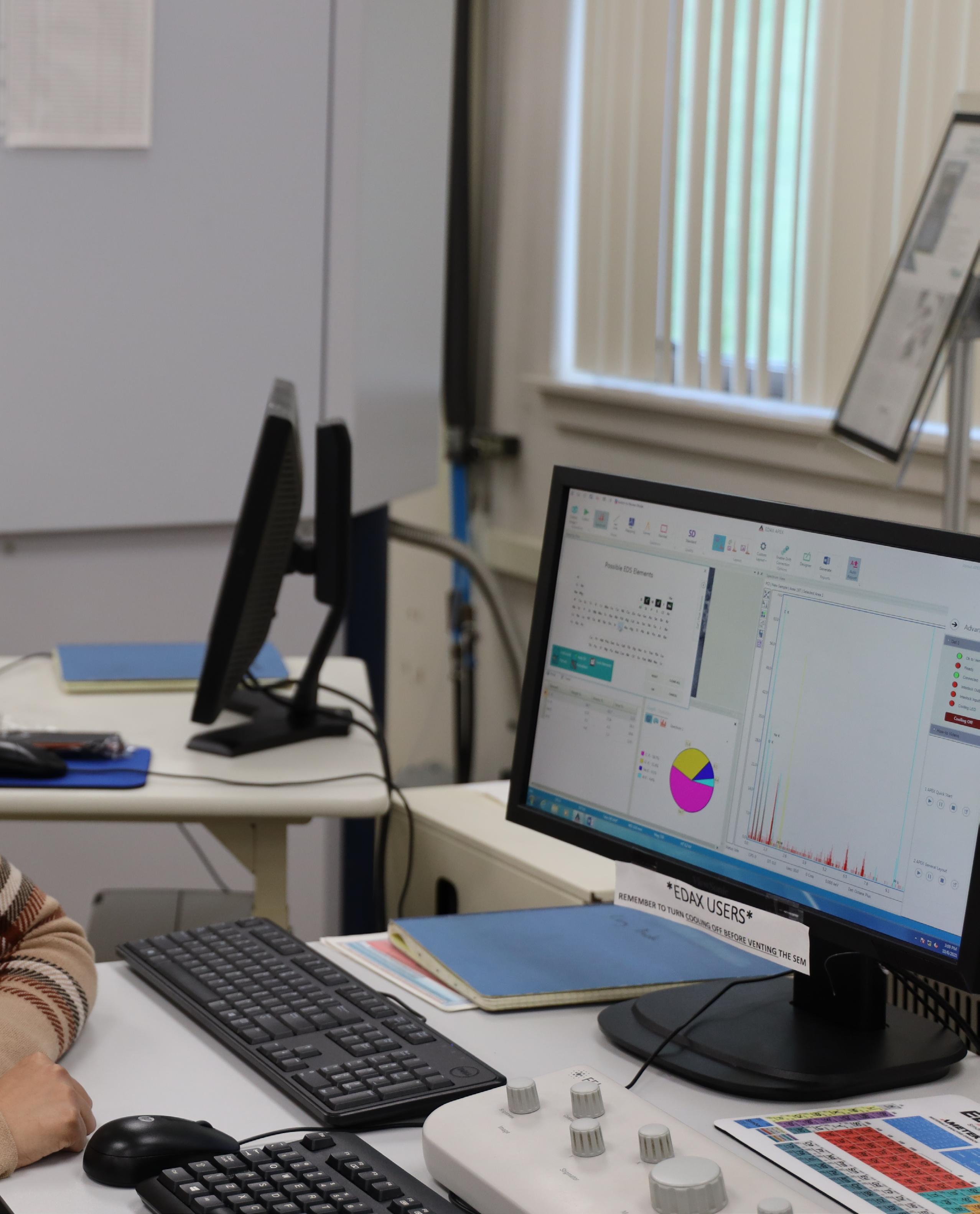
15 energy.uconn.edu |
UConn’s Materials Science and Engineering (MSE) graduate student Sara Pedram is from Iran; a country known for its energy exportation, specifically, oil. Ironically, the dependency much of the world has on her home country’s industry, is one of the forces that drove Pedram to focus her graduate research on renewable energy. Before Pedram ever started this research, the Iranian oil industry had influenced the direction of her undergraduate studies. “I have always enjoyed and excelled in math and science, and because Iran has a big oil and gas industry, I thought becoming a chemical engineer would be the most sensible career path for me,” she says. Prior to moving to the United States, she had pursued her bachelor’s and first master’s degrees in Chemical Engineering from Shiraz University and Amirkabir University of Technology, respectively, in Iran. She then worked as a researcher at the Chemistry and Chemical Engineering Research Center of Iran (CCERCI) and at the Pierre and Marie Curie University in France. It was during this time in France that Pedram thought she might like to travel again. “I became highly interested in continuing to do work in another country,” she says. “The U.S. is a very diverse country with many opportunities for everyone, so I decided to build a career here.” While the idea of pursuing highly technical studies in three entirely different countries might scare some, it excited Pedram. In 2017, she packed her bags and moved to the United States to begin looking for jobs related to chemical engineering. However, according to her, it was very difficult to find a job having no previous work experience or degree from the U.S. “This led me to pursue a master’s degree instead. I already had my master’s in Chemical Engineering, so I wanted to study something related to my background but not the same thing,” she says. Materials science and engineering was something that Pedram says she had become familiar with and interested in during her past research in Iran and France. “It is a highly interdisciplinary field that deals with a number of research areas, and I found it an appropriate area for my long-term career goals. Through my research, I discovered UConn’s MSE program, which is highly-ranked and well-regarded,” she says. I am very happy with my decision to join UConn for the real-world experiences and education.
MSE Graduate Student Researches Alternative Energy Sources
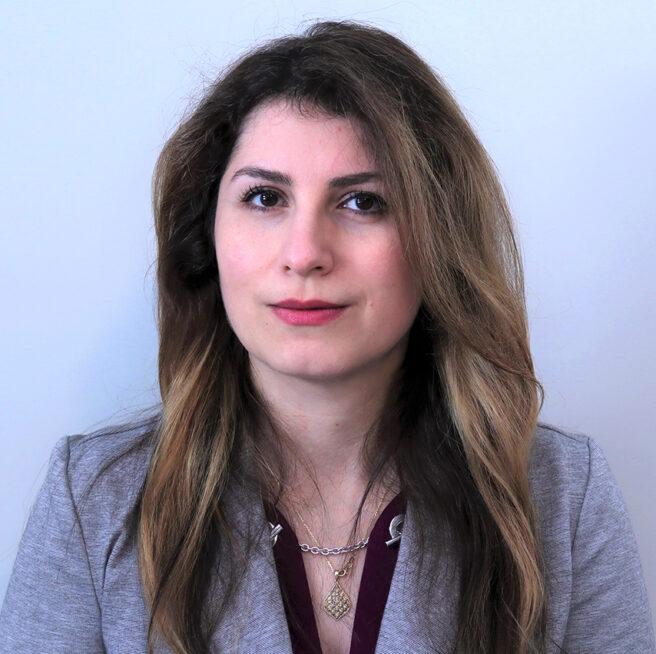 written by Gabriela Esposito
written by Gabriela Esposito
16
C2E2 was all a buzz preparing for a visit from 80 middle school students from the summer program “Empowering Kids”. This organization is a summer program, whose visit to C2E2 exposed the students to various engineering disciplines and the different environments and resources available for energy research at UConn. Students who participated came from Hartford, East Hartford, Wallingford, Waterbury, West Haven, and Stratford.

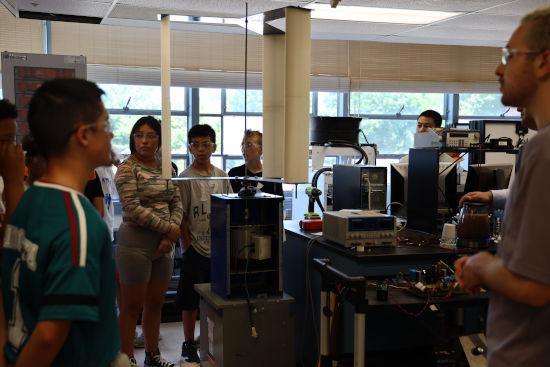
“Empowering Kids” Through Clean Energy Education
The event started off with a presentation by Alanna Gado and Nicole Beauregard, engineering students at C2E2, who explained the importance of clean and renewable energy for the future. Following the presentation, students were escorted through the laboratories to witness demonstrations and lab tours from Andres Ortiz Godoy showing high power magnification using a Scanning Electron Microscope, Zhiqiao Zeng illustrating materials applications using Reactive Spray Deposition, James Sweeney demonstrating Proton Exchange Membranes and C2E2’s fuel cell go-kart, and Yinyu Wang demonstrating electro-spinning technologies. The students asked several great questions as they were introduced to the research being conducted at C2E2 to promote clean energy. The event extended to the Longley building where demonstrations by Professors Ali Bazzi and Sung Yeul Park, as well as graduate assistants, Leila Chebbo, Pengwei Li, Thomas Cusson, Spencer Macri, Uilliam Kutrolli, and Mohammad Fares El Hajj Chehade were presented. Professor Bazzi demonstrated how solar power can warm hot chocolate. His group also demonstrated an inverter for DC/AC renewable energy conversion and power systems for space habitats. Professor Park’s displays included demonstrations on smart grids and a train using wireless power transfer. These examples provided educational experiences that helped the students see how clean energy can be applied in real life. Many thanks to everyone for their participation and their contributions for making this event a success!
17 energy.uconn.edu |
DR. ALI BAZZI RECEIVES ONR DURIP AWARD TO BUILD A UNIQUE TESTBED FOR NAVAL PROPULSION DRIVES RESEARCH
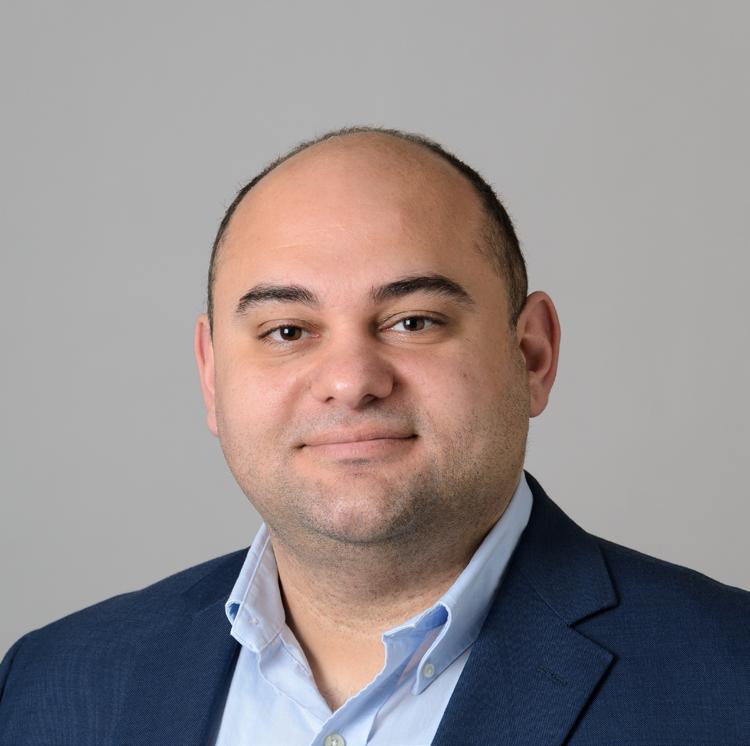
Each year, the U.S. Department of Defense (DoD) awards funds for research in higher education through its Defense University Research Instrumentation Program (DURIP). Dr. Ali Bazzi, from UConn’s Center for Clean Energy Engineering and Electrical and Computer Engineering department, received a DURIP award for his project, “High-voltage High-frequency Power Electronic Testbed for Naval Propulsion Drives Research.” He has been working in his DURIP lab in UConn’s Center for Clean Energy Engineering, where he has created his own unique testbed, a platform used for testing electric machines, insulation material, cables, control methods, and health monitoring techniques. What makes this an exciting project is this new testbed which features an inverter that has never been created before. It is able to convert 7.2 kilovolts DC to AC at any desired voltage, within a certain range. It can also handle up to 100 kilowatts of power using SiC semiconductor technology. No one has developed an inverter with the same qualifications, and it has proved to be a monumental task. When asked about any challenges he had faced over the past three years, Dr. Bazzi mentioned that finding the right people willing to build this special equipment was the biggest difficulty. He and his team reached out to five different industry leaders with experience building medium-voltage converters, but none of them were up for the challenge due to extremely high engineering costs. However, Dr. Bazzi finally found his match: Cougar electronics, a Connecticut company that specializes in high-power electronics, was able to design and ship out the equipment using the help of its parent company in France, ARCEL. Another challenge was dealing with the pandemic. DURIP projects tend to take about one year, but due to delays in shipping and reduced lab capacities, this project has taken three years to come to fruition. In evaluating propulsion drives, this project can be a game changer for designing and evaluating electric motor drives as well as increasing UConn’s visibility and capability in high end power research.
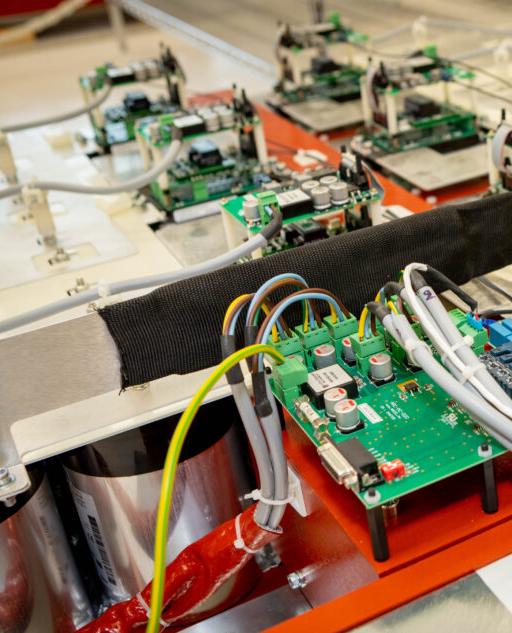
18
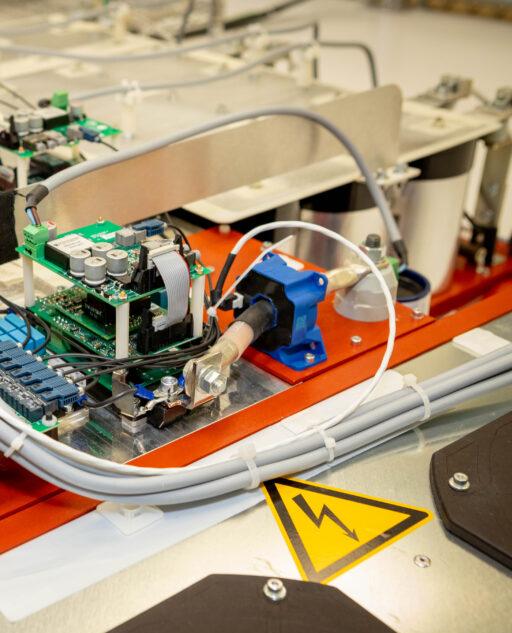
19 energy.uconn.edu |
NEW FUEL CELL GETS NEW LOOK, THANKS TO STUDENT DESIGN
UConn’s newly installed fuel cell sports an eye-catching new look, thanks to a student-led design contest aimed at expanding awareness of the clean-energy technology. The new 460kW fuel cell, recently installed at the Depot Campus in Storrs, was manufactured by HyAxiom, a Doosan company from South Windsor, replacing a 400kW fuel cell. The new fuel cell has a thermal recovery of 1.7 million BTU/hour of useable heat while producing the 460kW of electricity for UConn’s research labs, including those working on advancing fuel cell and microgrid technology at UConn’s Center for Clean Energy Engineering. UConn’s Clean Energy Society, led by Liam Enea ’24 (CAHNR), facilitated the contest to design a “wrap” for the new fuel cell, which was unveiled in a ceremony at the Depot Campus on Monday, Oct. 31. “The new fuel cell provides heating and electrical power to the depot campus labs within C2E2,” Enea says. UConn President Radenka Maric, who met with Granholm at the fuel cell event in August, says all the students involved, from the Clean Energy Society to the contest entrants, should be proud of their work. “I am very impressed by the talent and creativity of the students who worked on this design project, and I am grateful to the Clean Energy Society for taking the lead on this effort,” Maric says. Leo’s winning design is now on permanent display as the wrap for the fuel cell, located at 44 Weaver Road on the Depot Campus.
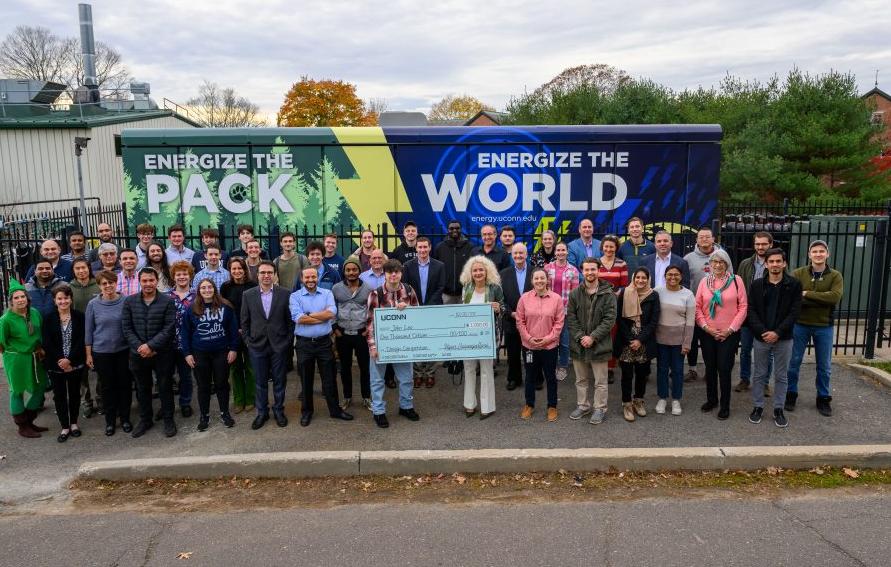
20
UCONN’S PARTICIPATION IN ISRAEL MISSION PRODUCES FRUITFUL DISCUSSIONS, PARTNERSHIP EXTENSION
UConn’s faculty research expertise, commitment to sustainability, and reputation as a hub for innovation and job creation were all highlighted this month as President Radenka Maric joined Gov. Ned Lamont and others for a historic economic development mission to Israel. The trip, which concluded last week, also resulted in the signing of a Memorandum of Understanding (MOU) to continue and build upon UConn’s partnership with the Technion-Israel Institute of Technology. That partnership started in 2012 and focuses on clean energy research and the exchange of faculty and students between the institutions for collaborations on that topic and other projects to promote sustainability. The MOU creates a framework for UConn and the Technion to translate their research into clean energy companies and strategies to transition away from fossil fuel dependence to carbon-neutral economic development. In Connecticut, the research has the potential to help the state become a regional green hydrogen hub. Maric and Daniel Weiner, UConn’s vice president for global affairs, represented the University during the five-day economic development mission to Israel. They provided critical perspectives throughout the visit on ways in which UConn’s role as a major research institution enhances Connecticut’s attractiveness for new companies and investments.
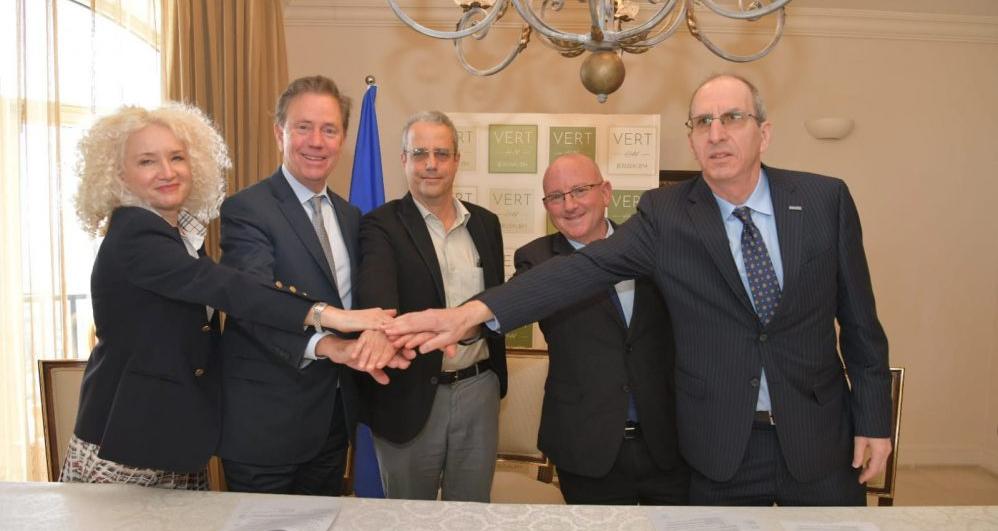
21 energy.uconn.edu |
UCONN APPLIES CLEAN ENERGY EXPERTISE TO MULTISTATE HYDROGEN HUB
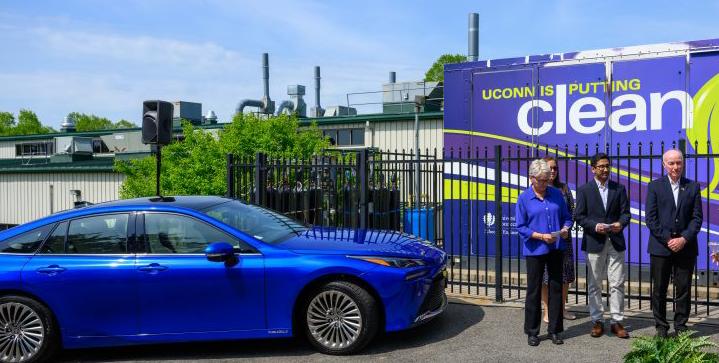
SEPTEMBER 14, 2022 | MATT ENGELHARDT
UConn is putting its expertise in clean and renewable energy into practice as a member of a six-state, multiagency and university consortium seeking to establish a Northeastern hydrogen hub. The consortium is laying the groundwork for a U.S. Department of Energy proposal funding opportunity anticipated to be announced soon. The federal government is expected to allot $8 billion as part of the Bipartisan Infrastructure Investment and Jobs Act. The state of Connecticut joined the consortium in March, along with other state partners New York, New Jersey, Massachusetts, with Maine and Rhode Island joining recently. The New York State Energy Research & Development Authority (NYSERDA) is leading the effort, and Connecticut represents the gateway to New England as well as a key part of the I-95 corridor. “Connecticut has long been a leader in addressing the climate crisis and in researching and developing innovative technologies, and this exciting partnership unites both of those key leadership areas,” Governor Ned Lamont said in a statement. “We’re proud to share a commitment to climate leadership, fuel cell innovation, and clean energy jobs with our neighboring states, which will position us competitively to bring federal investment in clean hydrogen to our region.” UConn was announced as a strategic partner in the proposal in late August. The hydrogen hub – one of at least four proposed nationally – is designed to advance leadership in clean hydrogen infrastructure deployment, research, and development. “The U.S. Department of Energy (DOE) released a notice of intent to fund the Bipartisan Infrastructure Law’s $8 billion program to develop regional clean hydrogen hubs (H2Hubs) across America,” says UConn Interim President Radenka Maric, herself a renowned expert on clean energy research and innovation. “UConn, a university with leading global experts in hydrogen production, storage and infrastructure, is proud to be part of this collaboration for the northeast region, leading the way in addressing climate change and delivering opportunities for greater health, resilience, and economic development.”
22
‘THE MIDDLE OF HISTORY BEING MADE’: U.S. ENERGY SECRETARY GRANHOLM LAUDS UCONN IN CAMPUS VISIT
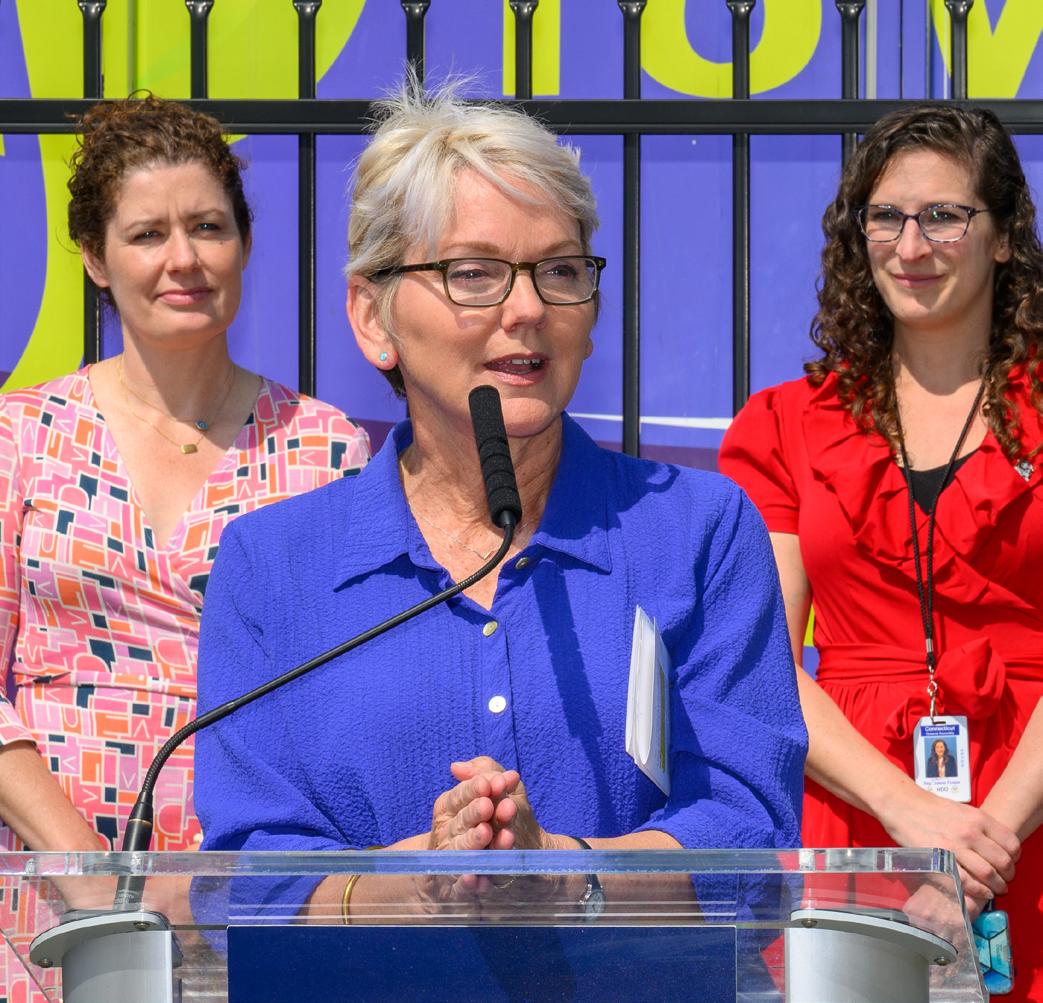
U.S. Energy Secretary Jennifer M. Granholm rolled up to UConn’s Center for Clean Energy Engineering in no ordinary vehicle with then Interim President Radenka Maric in a fuel cell-powered Toyota Mirai. Her visit to Storrs was the first of three scheduled stops in eastern Connecticut to talk about the importance of clean energy and was meant to take note of UConn’s major contributions to the field. Using the backdrop of the much-larger fuel cell that powers C2E2, Granholm also announced $7 million in funding from the U.S. Department of Energy for five institutions to create industrial assessment centers similar to the one developed last year in partnership between UConn and the University of New Haven. The Southern New England Industrial Assessment Center was established with significant funding from the Energy Department and was among a group of 32 universities in 28 states to share $60 million to begin programs that provide free energy assessments to small and mid-sized businesses. “The whole point here, of course, is to make sure we are using less energy across the country. The industrial sector produces about 30 percent of our greenhouse gas emissions. Making sure we use less energy is an important part of getting to that clean energy future,” Granholm said, calling UConn and its assessment center “an example of what we want to have happen across the country.” From fuel cells to batteries and decarbonization, she said the department is investing $9.5 billion in hydrogen technologies and the requisite infrastructure. “It’s just really an exciting time to be in this energy space,” Granholm said. “We feel like we’re in the middle of history being made. Sometimes it’s hard to tell that you’re making history when you are in the middle of it but we are right in the thick of just an incredible time.”
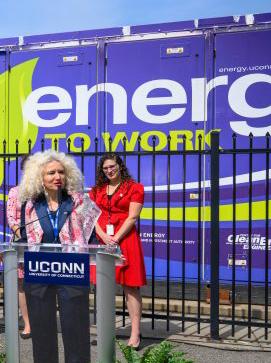
23 energy.uconn.edu |
U.S. SECRETARY OF ENERGY JENNIFER M. GRANHOLM
"The whole point here is to make sure we are using less energy across the country."
PROFESSOR JASNA JANKOVIC, PANELIST ON H2 VIEW’S VIRTUAL HYDROGEN SUMMIT EUROPE 2022
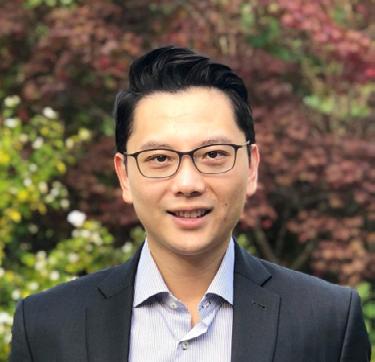
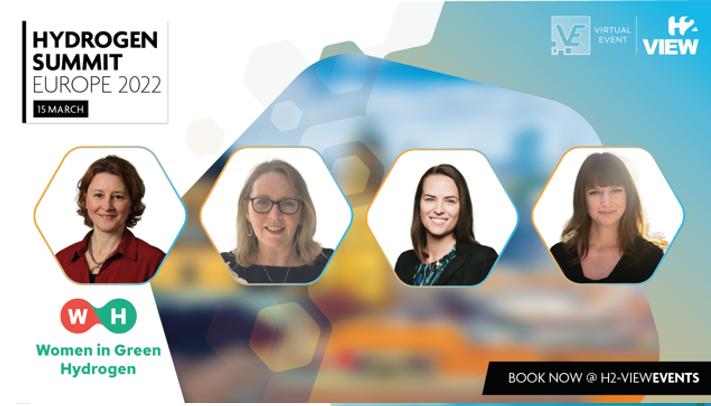
Hydrogen is a big agenda item of the Biden administration, and as the world moves towards scale, it is time to take action to facilitate climate change. New technologies are emerging around the world implementing hydrogen on a grand scale however it is not without its opportunities and challenges. UConn’s Assistant Professor and faculty member of Center for Clean Energy Engineering and Materials Science Engineering, Jasna Jankovic, participated in the H2 View’s Virtual Hydrogen Summit Europe 2022 on March 15: Women in Green Hydrogen – Starting and Developing a Career in the Fast Evolving Hydrogen Sector. She was a session panelist along with Diana Raine, Hydrogen Advisor at Worley, Leila Asdal Danielsen, Chief Marketing and Communication Officer at Hystar, and Ann-Kathrin Lipponer, Ministry of Economic Affairs, State of North Rhine-Westphalia. Panelists discussed the changing and evolving hydrogen sector amongst their career and experiences. The event also offered sessions on Policy, Investment, and Action. To learn more about H2 View’s Virtual Hydrogen Summit Europe 2022, visit https://lnkd.in/dS2tx7Tb.
NASA SELECTS PROPOSALS TO ENABLE MANUFACTURING IN SPACE FOR EARTH
Following a decade of assembly of the International Space Station and the subsequent decade of research onboard the ISS National Lab, NASA moves boldly into the decade of results with the award of new and promising technologies for in-space manufacturing of advanced materials and products for use on Earth. With more than 21 years of continuous occupation, the International Space Station continues to demonstrate the benefits of microgravity not just for discovery but for the development of new technologies and products that have the poten tial to improve the quality of life on Earth. NASA selected eight proposals submitted in response to Focus Area 1A of the NASA Research Announcement(NRA) seeking In Space Production Applications (InSPA) flight . UConn's Associate Professor, Yupeng Chen engaged in pioneering tissue research who was one of the recipients that won a NASA contract to fabricate therapeutic biomaterials under low gravity conditions aboard the International Space Station (ISS).

24
FACULTY SPOTLIGHT: DR. NECMI
TIME…
Dr. Necmi Biyikli is an Electrical and Computer Engineering Assistant Professor at the University of Connecticut. Before joining UConn in 2017, he was an Assistant Professor at Bilkent University, Turkey. His areas of expertise focus on atomic layer deposition (ALD), semiconductor thin films, (opto) electronic devices, nanoscale energy materials, flexible and wearable electronics, smart/tunable materials, environmental sensing, and selective materials processing. In his own independent research lab, Dr. Biyikli focused on the low-temperature synthesis of the III-nitride compounds using the emerging atomic layer deposition (ALD) technique. Besides dramatically lower growth temperatures, ALD provides thickness control at the atomic scale and features near-ideal uniformity even on very high-surface area highly complex 3-D nanostructures. Dr. Biyikli’s Atomic Layer Engineering (ALEng) Lab is one of the leading plasma-ALD research groups worldwide particularly in III-nitride ALD research. If the ultimate goal of device-quality film synthesis can be achieved at low temperatures via ALD, this might trigger a huge impact in future device technologies. Dr. Biyikli enjoys investigating processes that have not yet been explored or understood. He is one of the scholars at the forefront of this specific atomic-scale materials research field. He also likes to conduct active experiments with his students rather than staying in his office. He appreciates being in the lab, especially in the Engineering Science Building. Its open lab environment provides a nice opportunity to interact with other groups. He enjoys sharing his expertise with the students, meeting with other research group members and developing research collaborations with mutual benefit.
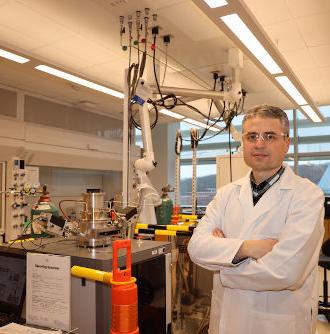
25 energy.uconn.edu |
BIYIKLI’S ATOMIC LAYER ENGINEERING LABORATORY: BUILDING THE NEXT GENERATION DEVICES, ONE ATOMIC LAYER AT A
NOVEL TECHNIQUES IN 3D PRINTING AT UCONN’S TECH PARK

UConn’s Center for Clean Energy Engineering’s faculty, Drs. SeungYeon (Sally) Kang and Anson Ma, along with their colleagues, recently authored an article titled “Additive Manufacturing of Embedded Carbon Nanocomposite Structures with Multi-Material Digital Light Processing (MMDLP)". The article was published in the Journal of Materials Research.
FIVE ENGINEERING FACULTY RECEIVE NSF CAREER AWARDS
Eight UConn researchers across six disciplines have received CAREER awards. The National Science Foundation Faculty Early Career Development (NSF CAREER) Program awards competitive grants to support the research programs of early-career faculty who demonstrate remarkable potential to become leaders in their field. In addition to advancing research, these projects actively engage students and the community. This broadens the impact of the research and encourages students on all levels and community members to take an interest in STEM research.
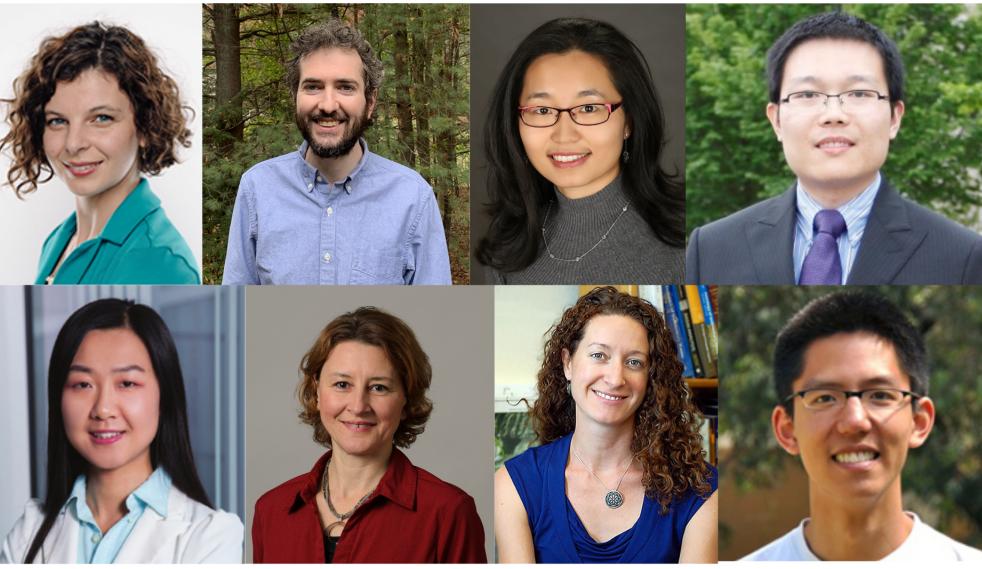
26
“CURIOSITY COUPLED WITH DETERMINATION”
Dr. Naba Karan recently joined UConn as an Assistant Research Professor at C2E2. Karan previously worked at alpha-En Corporation, a lithium metal battery start-up company in Yonkers, New York. There, he focused on the development of process parameters optimization and scalability of lithium metal thin film (electro) deposition for the next generation of lithium batteries.
DR. POLUDNENKO COLLABORATES WITH UMASS COLLEAGUES ON NASA AWARD
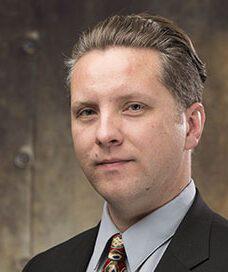

Congratulations to Dr. Alexei Poludnenko, professor at UConn’s C2E2 and the Mechanical Engineering Dept. who will collaborate with UMass-Dartmouth's Professor Dr. Robert Fisher who was awarded $550,000 through NASA's highly-competitive Astrophysics Theory Program. The grant will focus on supercomputer simulations of supernovae.

27 energy.uconn.edu |
C2E2 CLEAN ENERGY SYMPOSIUM
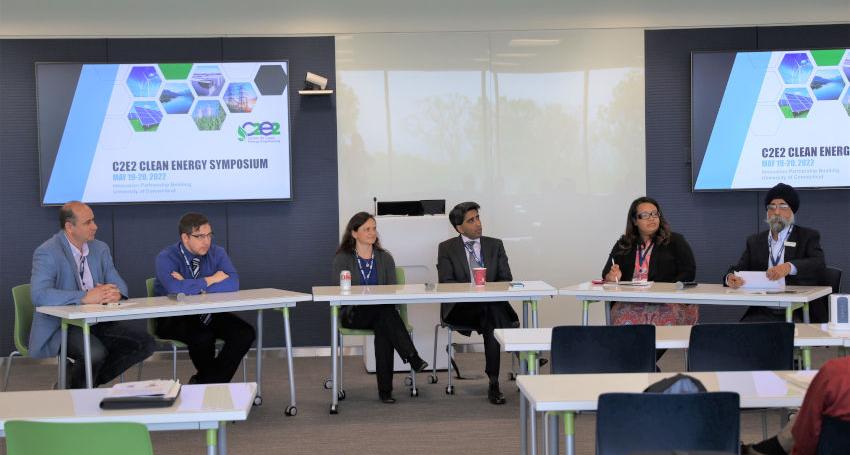
This event was buzzing with activity with comments of “It’s great to see the engineers on this campus discussing their projects with outside (industry professionals) and discussing what the future will hold for these kinds of projects”, as shared by Anthony Ingrassia, a UConn engineering student. Many students were excited to share their findings and work with potential employers and hear their feedback, as well as hearing about the exciting research being done in the industry world. Specifically, Arshiah Mirza expressed her excitement for the Eversource presentation and panel discussion, particularly learning about new inverters that will give more stability to the grid. “I also really enjoyed the panel discussion where industry experts talked about the hydrogen economy and how we can get there…also, how students can train themselves to be ready to work in industry”, she shared. This proved to be a great experience for students to gain a better understanding in the energy field and the research conducted in industry.
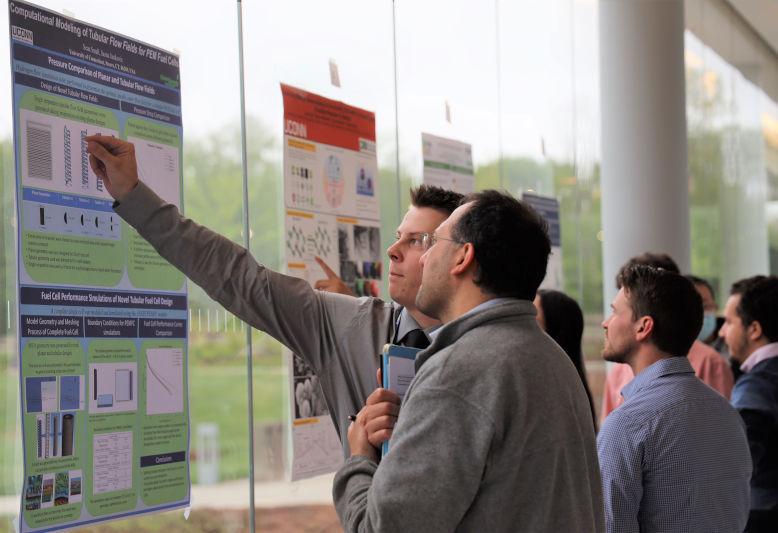

28
OUR VIDEOS
This video is a compilation of the research work in the area of clean and renewable energy technologides conducted at C2E2 by faculty and students. Learn more by visiting our website.
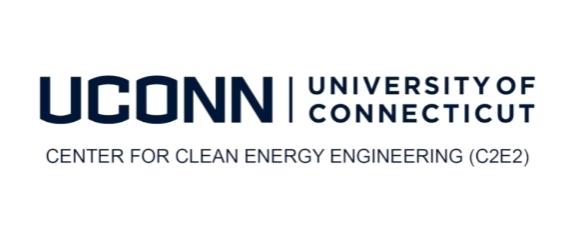
The main research focus of this video is the work conducted by Dr. Ali Bazzi in power electronics applications for electric motor drives, renewable energy systems, micro-grids, and the smart grid. Electric drives investigated cover a wide range of applications including plug-in, hybrid, and electric vehicles, and electric propulsion.
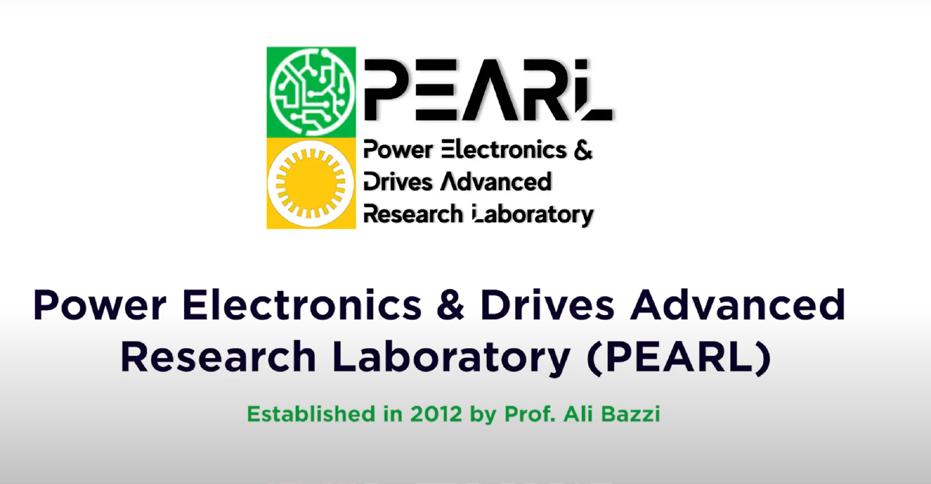
The Connecticut Center for Applied Separations Technologies (CCAST), 3D printing blends art with science.

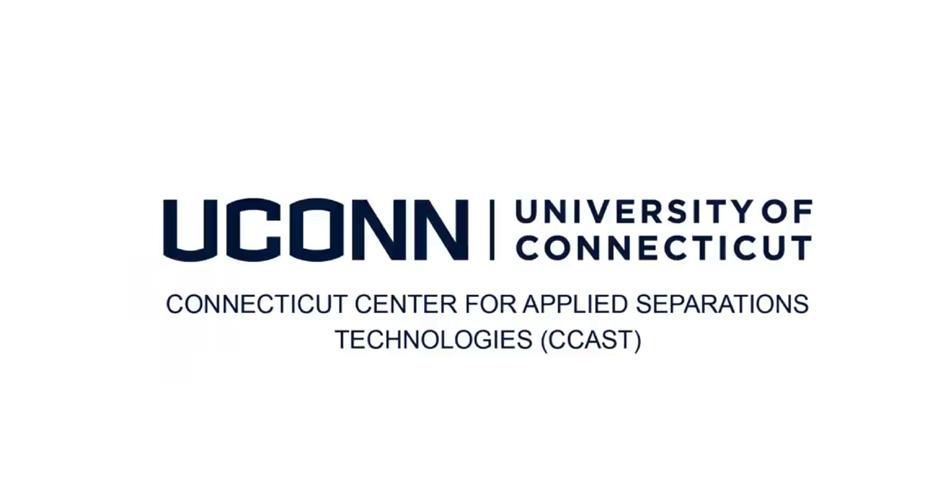
The H2 REU at C2E2 aims to educate undergraduate students through hands-on research in hydrogen technologies through a convergent approach involving mentoring in interdisciplinary engineering research. Learn about the work of former REU students.

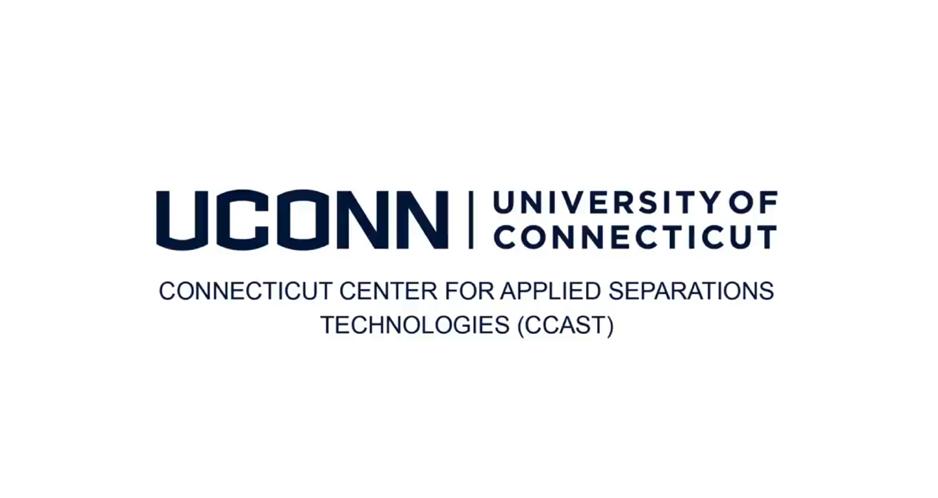
29 energy.uconn.edu |
H2 RESEARCH EXPERIENCE FOR UNDERGRADUATES (REU)
EXPENDITURES, GRANTS & PROPOSALS FY22
$46,576,299
AMOUNT FROM PROPOSALS
PROPOSALS AWARDS
$7,416,004
AMOUNT FROM AWARDS
85 24 $1,378,383 $3,767,476
INDIRECT COSTS DIRECT COSTS
$5,145,859
TOTAL EXPENDITURES
30
Total Expenditures
This data represents the number of new proposals that were granted during FY22. C2E2 is very committed to growing the center by focusing on larger funding announcements with collaborative partners.
This chart illustrates the expenditures related research grants for C2E2 in FY22.
This graph represents the new awards over the last 5 years. C2E2 has been strengthening their development of proposals through collaborative work amongst faculty and partners which has resulted in an increase in funded awards.
31 energy.uconn.edu | $0 $5,000,000 $10,000,000 $15,000,000 $20,000,000 $25,000,000 $30,000,000 $35,000,000 $40,000,000 $45,000,000 $50,000,000 FY2018 FY2019 FY2020 FY2021 FY2022 New Proposals - $ Proposal Amt
1,000,000 2,000,000 3,000,000 4,000,000 5,000,000 6,000,000 7,000,000 FY2018 FY2019 FY2020 FY2021 FY2022
$$1,000,000 $2,000,000 $3,000,000 $4,000,000 $5,000,000 $6,000,000 $7,000,000 $8,000,000 $9,000,000 FY2018 FY2019 FY2020 FY2021 FY2022 New Awards - $ New Awards Amt
Center for Clean Energy Engineering
University of Connecticut
44 Weaver Road, Unit 5233 Storrs, CT 06269-5233
Ugur Pasaogullari
Director & Professor
ugur.pasaogullari@uconn.edu
CONNECT WITH OUR LINKEDIN:

https://www.linkedin.com/company/ center-for-clean-energy-engineering
Student Writers: Matthew Mancini
Design: Matthew Mancini
Terry Barber-Tournaud
32

 Ugur Pasaogullari
Ugur Pasaogullari
 Director C2E2 Professor of Mechanical Engineering
Director C2E2 Professor of Mechanical Engineering


















































 written by Gabriela Esposito
written by Gabriela Esposito




























